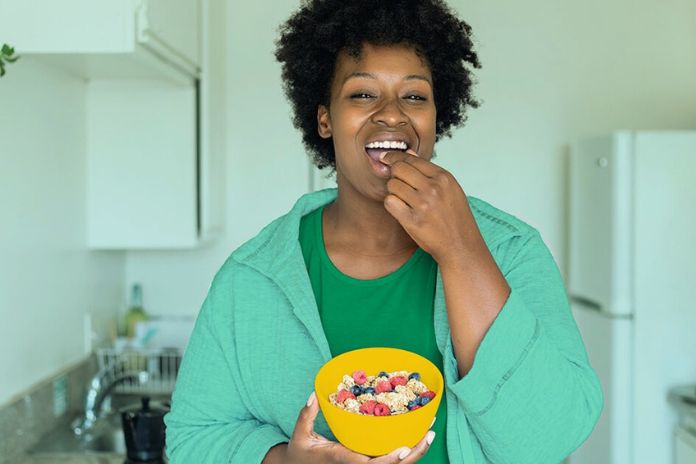The practice of physical activities is essential for the success of the weight loss process, along with a healthy diet. Keeping active is not only good for the body but also for the mind because, in addition to keeping the body fit, it releases substances in the body that cause a feeling of pleasure and well-being.
Some care with food and hydration before and after the practice of exercises should be observed to ensure adequate energy during the activity and help recover the muscles after the workouts.
Before starting, preference foods rich in carbohydrates, such as bread and whole grains, fruits and lean proteins, low-fat yogurt, white cheeses, and lean meats. This way, energy will be released gradually, avoiding fatigue and muscle wear. For this, the ideal is to eat at least 30 to 40 minutes before starting any exercise and avoid fatty foods or foods with excess salt and sugar, such as sweets, snacks, and fried foods.
A fruit salad with oatmeal for a lighter physical activity and a sandwich with whole meal bread, salad, and grilled chicken breast for a more intense activity are good options. More energetic fruits, such as (without natural guarana), banana, and avocado, are also good energy sources for physical activity. Never practice physical exercises on an empty stomach,
Keeping the body hydrated during exercise is equally essential, as we lose a lot of fluid and mineral salts throughout the activity. Besides consuming a lot of water throughout the day, having a bottle of water or coconut water close by is also enjoyable.
Proper nutrition after exercising is essential for muscle recovery. Food sources of protein, such as eggs and lean meats, in addition to nuts and nuts, sources of good fats, are potent allies in repairing muscle tissue. You can opt for an omelet with cheese, vegetables, and a mix of dried fruits as a post-workout meal. And never take food supplements without guidance from your doctor or nutritionist! Supplementation must be done under the advice of a professional to achieve the desired results.
How To Have A Healthy Diet?
With alarming numbers, the concern with what we have on the table is excellent; therefore, the WHO (World Health Organization) has released a step-by-step guide for daily meals.
Check out these five pieces of advice, which are already applied in the program :
1. Eat More Vegetables And Fruits
A plate full of colorful fruits and vegetables is good for health and weight loss. Include these items not only for breakfast, lunch, and dinner but also for snacks in between.
2. Eat Daily Servings Of Good Fat
Fat exists for a reason: it provides long-term energy at a more fundamental level. In addition, it stimulates the release of a hormone called cholecystokinin, which sends satiety signals to our brain and can even help us eat less.
3. Eat A Wider Variety Of Foods
Eating a variety of raw (unprocessed) and fresh foods daily helps you meet your daily nutrient needs. And the more colorful the dish, the more different nutrients you will consume!
4. Balance The Doses Of Sugar And Salt
Excessive amounts of these two ingredients increase the risks of high blood pressure and chronic diseases such as diabetes. In addition, high sugar consumption also deregulates the intestine’s functioning, increases the risk of cavities, and increases physical fatigue. Salt, on the other hand, is a double-edged sword: it is essential for the balance of fluids in the body, but its excessive consumption is dangerous for those who suffer from hypertension.
5. Breastfeed
The WHO reaffirms the importance of breastfeeding for the health of babies and children. Up to 6 months, an exclusive diet of breast milk is recommended and, after that age, the introduction of natural foods.
Also Read: Losing Weight In The Thighs? Five Tips For Slim Legs

